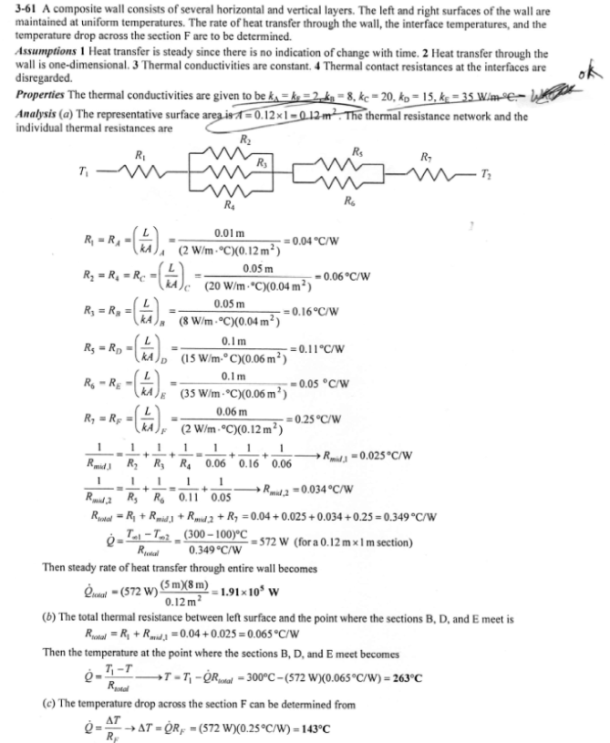Consider a 5-m-high, 8-m-long, and 0.22-m-thick wall whose representative cross section is as given in the figure. The thermal conductivities of various materials used, in W/mK, are k_A=k_F=2, k_B=8, k_C=20, k_D=15, and k_E=35. The left and right surfaces of the wall are maintained at uniform temperatures of 300 C and 100 C, respectively. Assuming heat transfer through the wall to be one-dimensional, determine (a) the rate of heat transfer through the wall; (b) the temperature at the point where the sections B, D, and E meet; and (c) the temperature drop across the section F. Disregard any contact resistances at the interfaces.

Consider a 5-m-high, 8-m-long, and 0.22-m-thick wall whose representative cross section is as given in the figure. The thermal conductivities of various materials used, in W/mK, are k_A=k_F=2, k_B=8, k_C=20, k_D=15, and k_E=35. The left and right surfaces of the wall are maintained at uniform temperatures of 300 C and 100 C, respectively. Assuming heat transfer through the wall to be one-dimensional, determine (a) the rate of heat transfer through the wall; (b) the temperature at the point where the sections B, D, and E meet; and (c) the temperature drop across the section F. Disregard any contact resistances at the interfaces.
